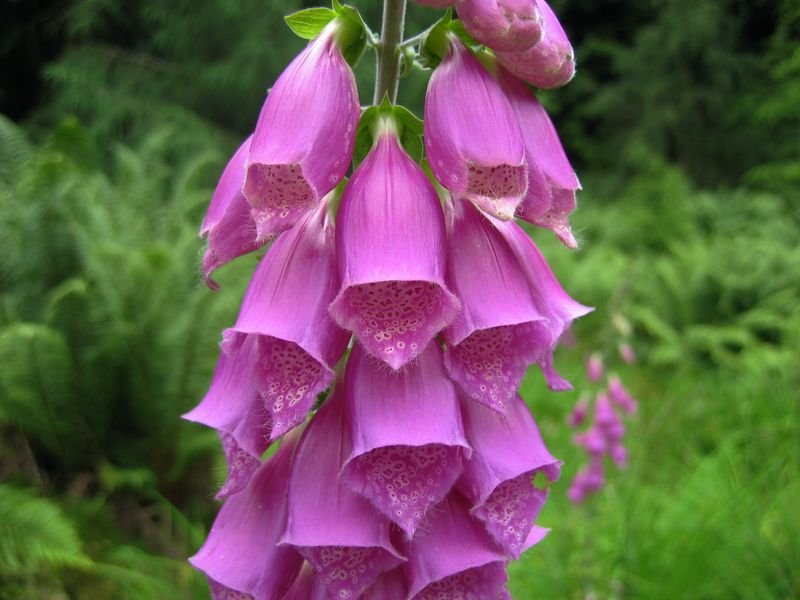Foxglove
Digitalis Purpurea
By: Stacy Snyder

The foxglove produces only dense leaves in the first seasons, but in the second season it produces a tall, leafy flowering stalk from 3 to 4 feet high. The leaves are from 4 to 12 inches long and are about twice as wide, are wrinkled, downy, and with a thick network of prominent veins. In early summer, the tall flower stalk produces numerous tubular, bell-shaped flowers that are about 2 inches long and vary in color: white through lavender and purple. The scientific name means "finger-like". They grow from 2 to 5 feet tall and no wider then 2 feet. The foxglove is used in landscape design because of its height and color. Some people consider the foxglove a weed. The Digitalis purpurea is one of the most common foxgloves.
Scientific Clasifications
&
Other Species Names
| Kingdom: | Plantae |
| Division: | Magnoliophyta |
| Class: | Magnoliopsida |
| Order: | Lamiales |
| Family: | Plantaginaceae |
| Genus: | Digitalis |
Here are 20 species:
Digitalis cariensis
Digitalis
ciliata
Digitalis davisiana
Digitalis
dubia
Digitalis ferruginea
Digitalis
grandiflora
Digitalis laevigata
Digitalis
lanata
Digitalis leucophaea
Digitalis
lutea
Digitalis obscura
Digitalis
parviflora
Digitalis purpurea
Digitalis
thapsi
Digitalis trojana
Digitalis
viridiflora
As with many poisonous plants, foxglove was traditionally used by expert herbalists for medicinal purposes. Even today, drugs made from foxglove plants are used to strengthen the heart and regulate heartbeat. Pharmacologically active compounds are extracted mostly from the leaves of the second year's growth, and in pure form are referred to by common chemical names such as digitoxin or digoxin, or by brand names such as Lanoxin, or Purgoxin.
Plant Propogation and Growing Conditions
To successfully grow foxglove, start by preparing soil a few weeks before hand, by digging in some complete plant food and well rotted compost. Foxglove seed is planted during the Autumn and should have only the lightest covering of sifted soil, which should then be firmed down. Cover with a sheet of newspaper and keep moist.Once the plants are established and particularly near flowering time, they can have regular applications of liquid manure and ample water during the dry weather. A lot of the Foxglove plants do not flower until the second year after planting, but their foliage makes an atttractive ground cover.
The foxglove is Vulnerable to crown rot and many other diseases so it needs space (about 6 inches all the way around the plant base) and plenty of drainage.They grow best in partial shade and in acidic soil, rich in humus. They grow best in zones 4-8. Foxglove is seen at its best in cool climates.
If Questions Contact: Stacy.Snyder@ndsu.edu